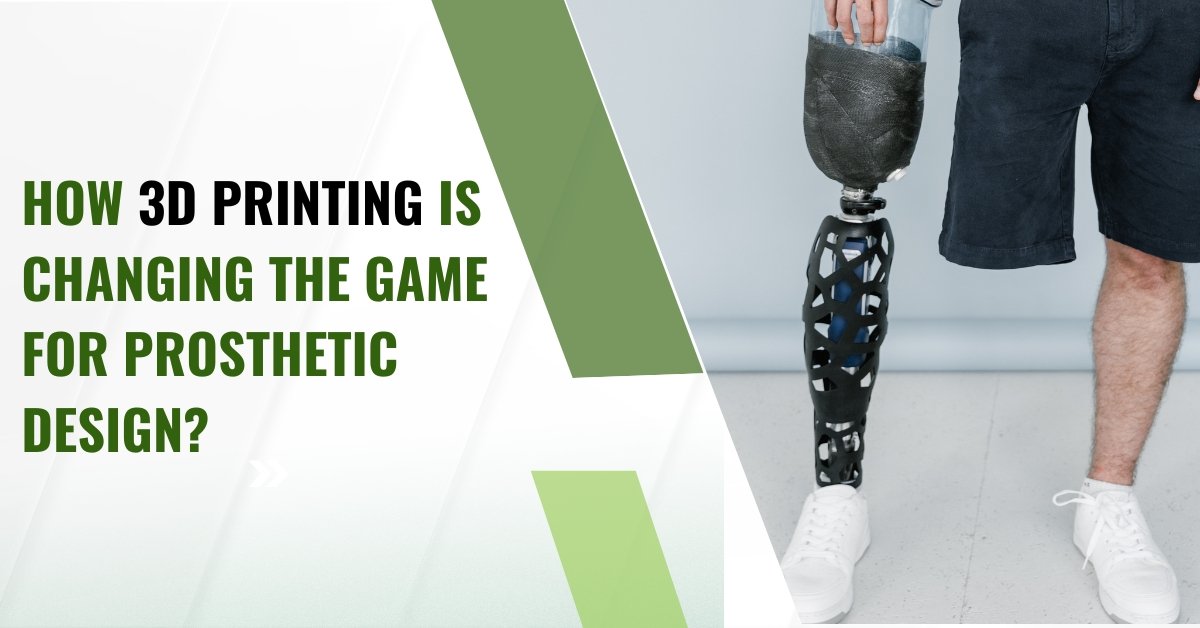Technology has made incredible progress in healthcare, especially in the world of prosthetics. One of the most groundbreaking innovations in recent years is 3D printing. This advanced technology builds objects layer by layer, allowing for the creation of highly customized, affordable, and effective prosthetic limbs. In this article, we’ll explore how 3D printing is used in prosthetics, its advantages, how it is changing the industry, and what the future holds.
How is 3D Printing Used in Prosthetics?
3D printing plays a vital role in making prosthetic devices that are designed to fit a person’s unique body shape and requirements. Here’s how it works:
Customization: Using 3D scanning, a detailed measurement of the patient’s limb is taken. This data is then used to create a digital model that perfectly matches their anatomy.
Faster Production: Traditional prosthetic manufacturing can take weeks or even months. With 3D printing, a custom prosthetic can be made in just a few days, reducing long waiting times.
Complex Designs: 3D printing allows for the creation of lightweight yet durable prosthetic limbs with intricate structures that may be difficult or expensive to produce using conventional methods.
Cost-Effectiveness: Unlike traditional prosthetics, which require expensive materials and molds, 3D printing reduces material waste and production costs, making prosthetics more affordable and accessible to a wider population.
What Are the Benefits of 3D Printed Prosthetics?
The adoption of 3D printing in prosthetic production brings several advantages that enhance both the quality of the devices and the experience of the user.
1. Better Fit and Comfort
Since 3D printing uses exact digital measurements, the prosthetic limb is made to perfectly fit the user’s body. This ensures a more comfortable experience and minimizes discomfort, skin irritation, or misalignment issues that are common with traditional prosthetics.
2. Lower Cost
Traditional prosthetic limbs can be very expensive due to high material costs and labor-intensive processes. 3D printing significantly cuts down on these expenses by reducing waste, eliminating the need for expensive molds, and streamlining production. This makes prosthetics more affordable, particularly for people in developing countries or those without insurance coverage.
3. Quick Production and Prototyping
One of the biggest advantages of 3D printing is its speed. Instead of waiting weeks or months for a prosthetic limb, patients can receive one within days. Additionally, quick prototyping means that designers can test, modify, and perfect a prosthetic design rapidly based on user feedback.
4. More Innovative and Personalized Designs
3D printing enables designers to experiment with unique designs and functionalities. Prosthetics can now feature lightweight structures, artistic designs, or even personalized colors and patterns to suit the individual’s preference, making them both functional and stylish.
5. Easy Adjustments and Adaptability
As users grow or their needs change, adjustments to their prosthetic limbs can be made quickly. This flexibility allows for continuous improvements to enhance the prosthetic’s fit, functionality, and overall user experience.
How 3D Printing is Changing the Prosthetic Industry?
3D printing is not just a new way to manufacture prosthetics it is completely transforming the industry in several ways:
1. Improved Customization
Prosthetics are now more personalized than ever before. Since each limb is custom-made using digital scans, the fit is far superior to traditional, mass-produced options. This reduces complications such as pressure sores or discomfort from ill-fitting prosthetics.
2. Faster Production Times
Because 3D printing speeds up the process, patients can receive their prosthetics much faster. This is particularly important for individuals who rely on prosthetic limbs for everyday mobility and children who outgrow their prosthetics quickly.
3. Lower Costs and Greater Accessibility
By making prosthetics cheaper and faster to produce, 3D printing has made them more accessible to people around the world. In many regions, traditional prosthetics are too expensive, but 3D printing is changing that by providing a more affordable solution.
4. New and Creative Designs
With traditional prosthetic manufacturing, complex designs were often too costly or difficult to produce. 3D printing removes these limitations, allowing for new and advanced prosthetic designs that are both functional and aesthetically appealing.
5. Continuous Improvement Based on Feedback
The rapid prototyping cycle allows for continuous refinement. The ability to quickly make and test prosthetics means designers can refine their models based on real user feedback. This ensures that prosthetics continue to improve and evolve, meeting users’ needs more effectively over time.
What is the Future of 3D Printing in Prosthetics?
The future of 3D-printed prosthetics is incredibly promising, with exciting developments on the horizon:
1. Even More Personalized Prosthetics
As technology advances, prosthetic limbs will become even more tailored to each individual. Future designs may include adaptive elements that respond in real time to the user’s movements, making them feel more natural and intuitive.
2. Integration of Smart Technologies
Artificial intelligence (AI) and robotics are expected to play a greater role in prosthetics. Future prosthetic limbs may include built-in sensors that allow them to adjust automatically to different environments or predict the user’s movements for smoother functionality..For those seeking advanced prosthetic solutions, consulting a prosthetic legs manufacturer in Pune can ensure access to high-quality and customized prosthetics that meet your specific needs.
3. Advanced Materials for Better Performance
Scientists are continually developing new materials that are stronger, lighter, and more biocompatible. These materials will improve the durability and functionality of prosthetics while making them more comfortable and long-lasting.
4. Expanding Global Reach
As 3D printing technology becomes cheaper and more widely available, prosthetics will become accessible to more people worldwide. This will significantly benefit individuals in low-income and rural areas where traditional prosthetic options are limited.
5. More Collaboration and Innovation
With open-source designs and greater collaboration between engineers, medical professionals, and researchers, the pace of innovation in 3D-printed prosthetics is likely to accelerate. This will lead to new breakthroughs that enhance the quality and accessibility of prosthetics for all.
3D Printing is Changing Lives
3D printing is revolutionizing the field of prosthetics by making them more customized, affordable, and innovative. It allows for faster production, better fit, and continuous improvements, ensuring that users receive prosthetic limbs that meet their specific needs. With further advancements in technology, smart materials, and design, 3D-printed prosthetics will continue to improve the quality of life for millions of people worldwide.





